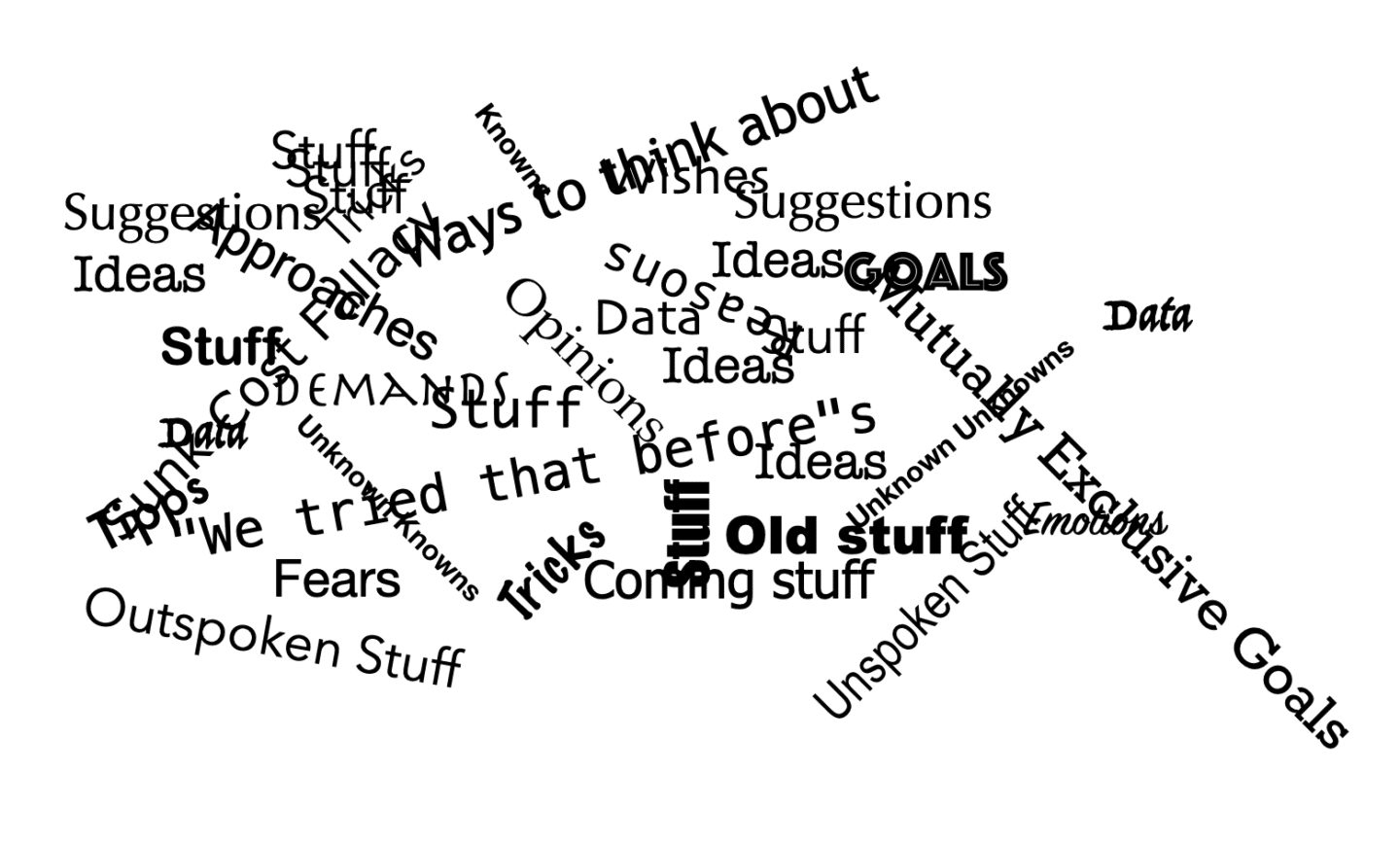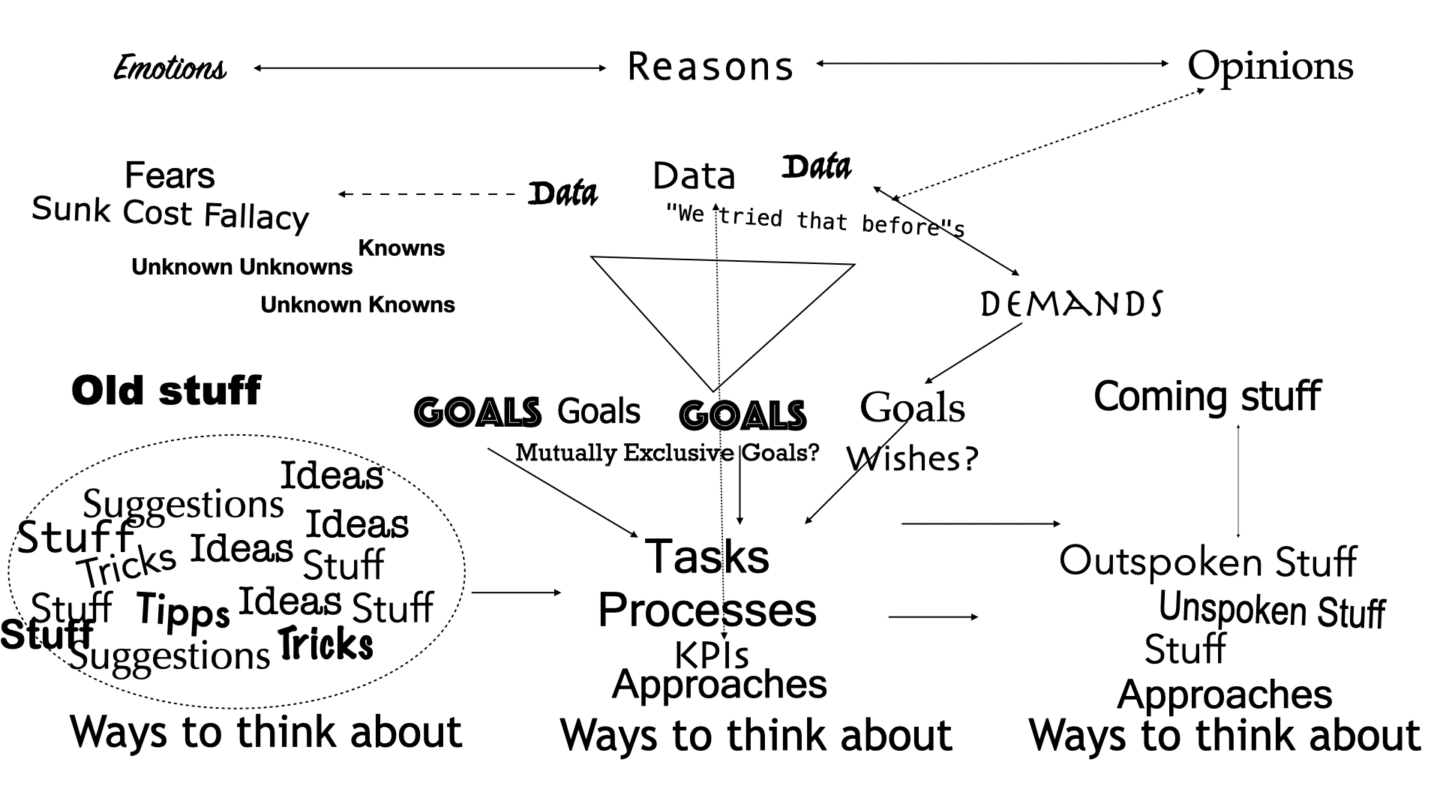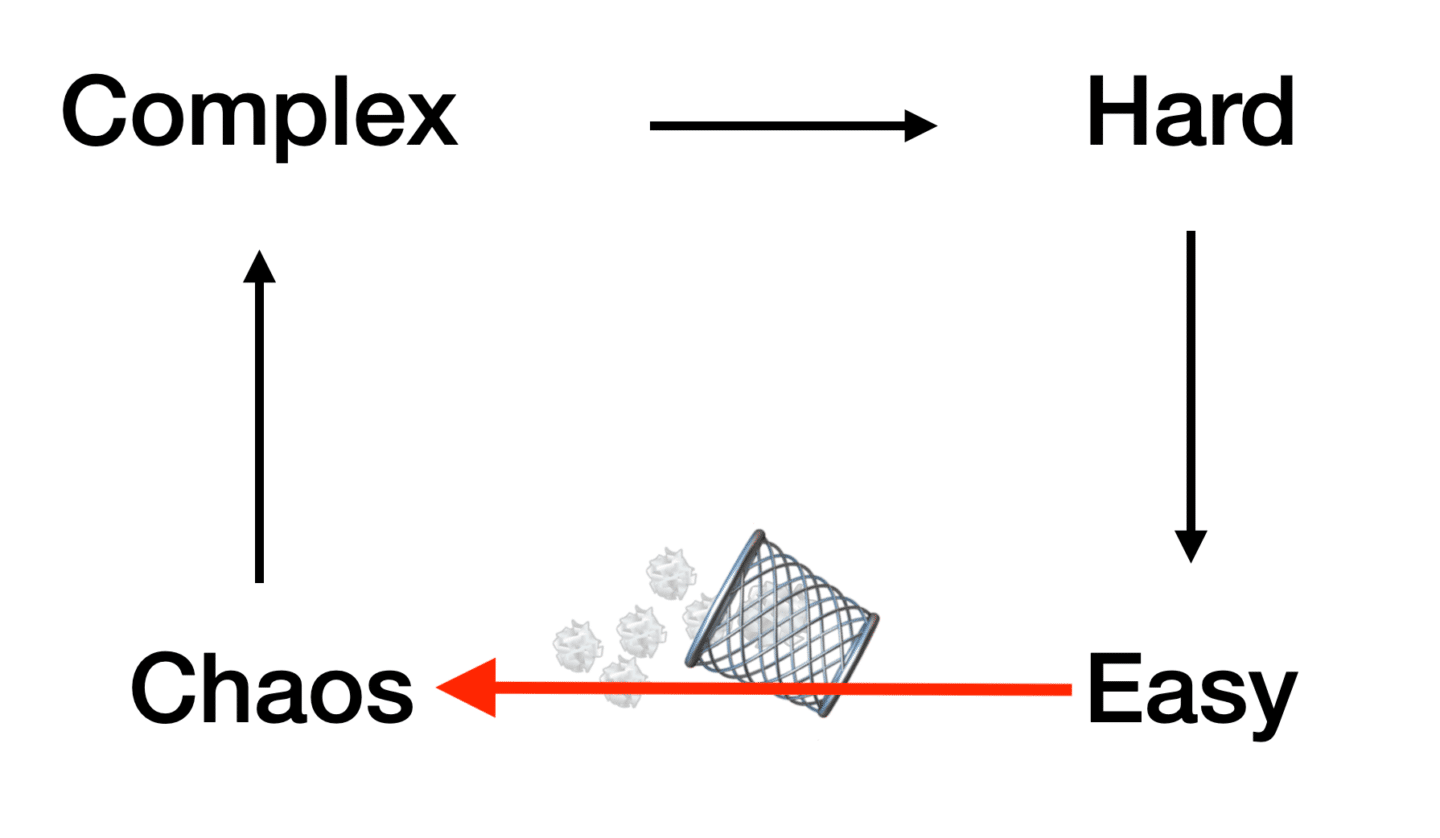I am a consultant.
I am paid to solve the challenges of my clients at their request.
I am considered a good one. Doing this now with my second company for 12 years, and in other setups for a few years longer. Most of my projects were a success, some weren’t. Those of which weren’t a success most of them fall into the category of “Just tell us what to do!” projects.
“Just tell us what to do!”
This is the sentence when a client had already hired me, we had a previous understanding of how our work together will work, and then suddenly everything changes. And now instead of close, intensive, sometimes annoying work together that also creates quite some effort on their side just to find the next steps, they just want to know what they must do to solve X / reach X.
Top-down, tell us what to do, and then get out again.
Most of the time, I refuse, insist on my approach of kick-off calls, analysis, question lists, long and intensive multidisciplinary workshops, live specifications of tasks and processes, milestones, and in-team prioritization.
But sometimes the clients keep insisting as everyone is too busy to come up with a way forward together (a huge red flag already, btw), and sometimes I give in. Gave in. Does not happen nowadays.
Just because you know what to do, does not make it a good idea.
- Truth is, about 80% of what the client needs to do to reach X I already know.
- Most of the issues in my field are archetypical.
- Even if the issues are unique for the client, they usually are not.
I have seen quite a lot of them already over time, in different variations.
Still, 80% is not enough. 20% are missing and the real blockers, those which block all other aspects might be in there. and for those I need insights, feedback, questions, see and experience how the people who will actually act on this really work.
5% is know-how, 95% is execution
But the much bigger issue is, that as with everything that has value, 5% is know-how, 95% is execution. And for the people with an organisation to act on know-how, they, the people who will manage and act on the know-how, must walk the walk.
Walk the walk
What walk? From Chaos to Complexity to Hard to Easy and Simple

Chaos → Complexity → Hard → Easy and Simple
(Note: This walk is loosely based on the Cynefin Framework, but my own interpretation of it.)
Chaos
At first, there is chaos, there always is. When you start something new, anything new, there are a lot of things, around, in the air:
- Ideas
- Tipps
- Tricks
- Approaches
- Ways to think about
- Opinions
- Old stuff
- Coming stuff
- “We tried that before”s
- Data
- Demands
- Goals
- Mutually Exclusive Goals
- Reasons
- Suggestions
and mostly it looks like this.

Yeah, seems like a lot is going on. But acting on this will just lead to. Well, work, lots of it. But none of it will lead to value. With a very high likelihood, negative value. As working based on chaos usually creates more chaos. So out of all of it, you need to move the chaos to complexity.
Embrace Complexity
Most things that are new and create value are complex. Things are not always easy. No discipline alone only consists of “low-hanging fruits”. Accept that things are complex, and try to see, feel, experience, and understand the complexity of it all. As soon as you understand that things are complex, that one thing influences other things, which then have an impact on something else again, then you are on the right path. And the right path means that you start to see more than one path. And that some of the paths are overlapping, while others might be mutually exclusive. I did mention, that it’s complex?

- Complexity is not pretty.
- Complexity makes you see where you are and what there is.
- Complexity puts things in their place.
- Complexity connects.
- And out of complexity hard choices emerge.
Hard
After you have seen, felt, experienced, and at least partially understood the complexity of it all.

Then the hard parts start
- Choose
- Prioritize
- Do
- Measure
- Learn
- Go to 1
You must start to choose a way to think about your challenge, you must choose where you want to go. And be aware that you might choose wrongly. That’s hard. (Note: Choosing always includes an aspect of measuring, as you need to know where you are #StatusQuo.)
You must prioritize what you will do, based on what you can do and when you can do it.
Then you must start doing it. For the first time. And nothing new that is worthwhile is ever easy.
Then you must get feedback. Measure it in some way.
And damn, you will learn a lot. Actually, most of the doing you will do will constitute learning. And that’s the moment when you will experience what you did not know.
And based on the learning, you will start to choose again.
Choosing a path, prioritizing what will be done, actually doing things, and then learning from the things you choose and did, that’s the hardest thing of them all. And then at one point ->
Simple and Easy
And at one point, it all falls away.

- What was hard gets easy.
- What was complex gets simple.
- What was chaos became a long distant memory.
What was a new challenge becomes daily business. And then not even this. Just things that are done this way.
Do not start with “Simple and Easy”
Some clients want to start with the “Simple and Easy”.
- Client: “Hey Franz, as your track record shows you seem to have figured out SEO. Tell us what we should do!”
- Franz: “Yeah, there is this multistep and multidisciplinary process where we go from where you currently are to a jointly specified project setup plus live specified SEO tasks, SEO processes, milestones, and KPIs. And enthusiastic commitment by the team to do it.”
- Client: “Sounds great. But well, we have a lot on our plate. Just tell us what to do!“

Don’t do it. It’s a trap.
Simple and Easy ads to Chaos.

If you start with simple and easy then in reality you just dump stuff into the chaos.
And there it becomes just even more chaos. And nothing will happen. Or they will happen but in the wrong order. Or they will partly happen and other things that work against it will also happen, leading to an overall negative outcome for everybody. Even for the consultant, as only successful clients lead to now clients. Additionally lifetime is limited, and investing your time and ressources into things that will not happen, is just boring.
You have to walk the walk.
A good consultant supports the client to walk the walk. And if necessary the walk can be walked damn fast – in a few days even. At least until the hard part, and then put them on the right track to easy and simple.
But no, you can not just skip to the end. If you do, then you have failed as a consultant – as you just added stuff to their challenges, instead of solving them with them.
Also, work with me. If this post does not scare you, that is. My name is Franz Enzenhofer. I am a consultant.
